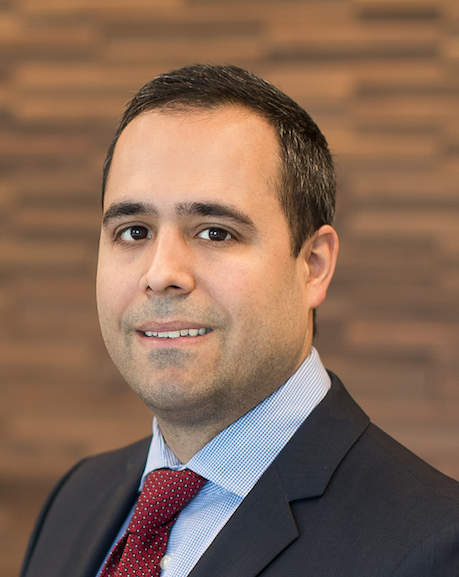According to Ryan Purpura and AJ Carna of McGuireWoods, private equity now drives the deal flow in energy. That means helping funds unlock value in a challenging commodity price environment.
CCBJ: Ryan, tell us about your experience as in-house counsel to publicly traded natural gas companies and outside counsel to E&P and midstream companies. What is changing for in-house lawyers in the industry?
Ryan Purpura: A couple years out of law school I was part of the team at another firm that helped take LINN Energy public. Right after the IPO, the first general counsel at LINN asked me to join him. It was going to be very acquisitive because the E&P MLP model relies on accretive acquisitions to increase the distributable cash flow. During my time at LINN, we did $5 billion in acquisitions and several billion worth of financing. I was immersed in that culture and industry from day one. When the Marcellus shale took off in the Appalachian Basin, I was one of a handful of lawyers in Pittsburgh who had practical oil and gas experience, in the mergers and acquisitions space in particular.
When LINN relocated to Houston, I joined another firm here in town and built their oil and gas practice over about an eight-year stretch. One of our clients, CNX Gas, asked me to fill in as an acting assistant general counsel. It was another year under my belt of being on the business side, wearing a generalist’s hat, and being truly immersed in day-to-day oil and gas operations. Being an in-house lawyer has helped me in taking a broader perspective in looking at how I represent clients on a micro level. I try as best I can to provide holistic business solutions.
In the future, there will continue to be volatility with commodity prices and increasing pressure on law departments in oil and gas companies to keep costs down and do more with less, to be more innovative and creative with how they counsel their internal business clients. Outside counsel are going to have to adjust to the new world of volatility and deliver significant value to our law department clients, so they can pass that additional value to their internal business clients.
AJ, tell us what you are seeing in the areas of the industry where you have significant experience, such as midstream and transition facilities, wastewater disposal facilities, and joint development and exploration agreements.
AJ Carna: We have seen a surplus of production over the last several years. However, until recently, there has consistently been a shortage of midstream and transmission facilities to transport that surplus production to market. Most recently, we have seen a push by the industry to develop more of this infrastructure.
Access to and supply of fresh water is and always will remain critical to natural gas development. We are frequently working with our clients in connection with the transportation of fresh water to well sites for use in fracking operations, as well as in connection with the transportation, recycling and disposal ofwastewater and flow-back water that results from fracking operations. There has been and continues to be a shortage of these facilities, particularly in Appalachia. As a result, we expect to see a continued effort by the industry to develop more of these facilities.
To what do you attribute the slowdown in the M&A landscape for oil and gas in the beginning of 2018?
Purpura: Principally, there’s going to be further consolidation in the industry by opportunistic, larger balance sheet players who have the ability to grow and add reserves, add drilling locations, in a cost-effective way. The really big dollar transactions have mostly been large public companies taking out other public companies or private equity backed operators.
Carna: Our operator clients are focused not only on the acquisition of assets and leaseholds, but, more particularly, on the strategic consolidation of existing acreage in areas where they already have a strong foothold. We are generally seeing more cautious operators looking for the right transaction that fits their strategic footprint.
Purpura: There’s also been a flurry of activity by private equity funds coming into the oil and gas space. In particular, the Permian Basin is white hot with transactions, with funds buying or selling. We’re starting to see some of the cyclicality, with a typical private equity fund looking to make an exit within three to five years of its initial capital deployment. Those exit events are coming up, and people are looking to monetize their investments.
How are you advising private equity clients going into 2019?
Purpura: The private equity funds are definitely doing more of the deal flow in terms of the aggregate number of deals. Some of the larger funds are awash in capital that needs to be deployed, so they are looking at much larger transactions. Other funds are not chasing big-ticket deals but looking at the middle market, where capital can be deployed in less competitive spaces and still generate good returns.
In large part, counseling private equity clients going into 2019 will be focused on helping them find value where they can. We not only do the legal work but help them deploy best practices at the operations level. We are one of a handful of firms that can walk in all worlds. We help newly capitalized operators with the myriad of challenges in trying to grow businesses in a tougher commodity price environment.
What do you anticipate for the energy sector overall in 2019?
Carna: We expect to see continued strategic consolidation in the oil and gas space, as well as the continued development of water and midstream infrastructure. There’s going to be continued development of renewables facilities and deal flow. We also expect to see consolidation in coal, with larger players acquiring smaller players, and strategic mine acquisitions.
Purpura: There’s no getting around the fact that, right now, power generation in the United States is very much coal and gas driven. Wind and solar are certainly adding more, almost on a daily basis, but coal and natural gas have a fundamental position when it comes to power generation. But it’s telling when you see old-guard oil and gas companies making investments in renewables. That tells you everything you need to know, right? When the BPs and Shells of the world are making renewables investments, that is going to be a part of our future.
Both of you have been advisers to industry organizations. How do those experiences shape your views on the future of the industry?
Carna: These organizations provide great insight on what is most important to the industry. We’ve had the opportunity to meet with industry insiders to discuss where we see the industry heading and what some of the greatest concerns in the industry are. Those forums provide great value in allowing us to focus on what issues are most pressing and what issues are keeping the industry awake at night.
Purpura: At the risk of sounding cliché, one of my favorite analogies is when Wayne Gretzky, the famous hockey player, was asked about his strategy – why he was so good. He said he didn’t go where the puck is but where the puck was going to be. That is something that we as a team have tried to adopt: anticipating what is going to happen and what the client’s needs will be. Our participation with industry organizations is trying to be out in the forefront with thought leadership, driving discussion on where things are going to go and what business problems will likely arise so we can get our clients thinking about things that they might not already be thinking about.
Ryan Purpura is chair of McGuireWoods’ energy practice. He represents oil and gas companies, private equity and hedge funds and other financial institutions in mergers and acquisitions, project finance and development and other transactions related to the energy industry. Reach him at [email protected].
AJ Carna is chair of McGuireWoods’ oil and gas practice. He regularly advises publicly traded and privately held energy companies in mergers and acquisitions, joint ventures, project development, regulatory matters, mineral conveyancing, and other transactions in the energy industry. Reach him at [email protected].
Published January 3, 2019.




